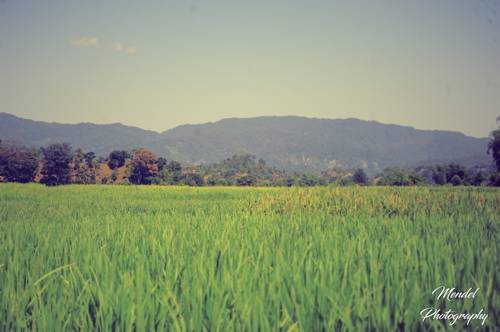
FAQ About The Role of Cultural Landscapes in Cinematic Worldbuilding

What is a cultural landscape in the context of cinematic worldbuilding?
A cultural landscape in cinematic worldbuilding refers to the use of real-world cultural or historical sites and geographical features as integral components of a film's setting. These landscapes are used to enhance the narrative by providing authentic, visually rich, and contextually meaningful backdrops that ground the story in reality, helping to evoke a sense of place and time.

How do filmmakers choose a cultural landscape for a movie?
Filmmakers choose cultural landscapes based on various factors such as the script's requirements, the narrative's historical context, the cultural significance of the location, budgetary constraints, and the visual appeal of the landscape. Directors and location scouts work closely to find settings that align closely with the story's needs and will resonate with the audience both visually and thematically.

Can you give an example of a film that effectively used a cultural landscape?
One notable example is the use of New Zealand's landscapes in the "Lord of the Rings" trilogy. The country's diverse terrain, from lush forests to expansive mountains, was used extensively to create the fantastical world of Middle-earth. These real-world landscapes brought authenticity and visual splendor to the film, enhancing the storytelling by creating an immersive world for audiences.

Why are cultural landscapes important in films?
Cultural landscapes are important in films because they provide depth and richness to the narrative. They help ground the story in a tangible reality, making it more relatable and believable for audiences. Additionally, they can evoke specific emotions, highlight cultural contexts, and visually communicate themes and motifs central to the film's message.

Do cultural landscapes influence the narrative of a film?
Yes, cultural landscapes can significantly influence a film's narrative by providing not just a backdrop but also a contextual framework that informs characters' actions, plot developments, and emotional arcs. A well-chosen landscape can enhance storytelling by reflecting or contrasting with the themes of the film, creating a deeper connection between the setting and the story.

What challenges do filmmakers face when using cultural landscapes?
Filmmakers face several challenges when using cultural landscapes, including logistical issues like securing permits, dealing with unpredictable weather conditions, and managing the impact of crew and equipment on sensitive environments. Additionally, they must navigate cultural sensitivities and ensure accurate representation without perpetuating stereotypes or cultural misappropriation.

How do cultural landscapes contribute to audience immersion?
Cultural landscapes contribute to audience immersion by providing a visually authentic and contextually accurate setting that helps viewers feel as though they are part of the film's world. These real-world sites can evoke emotions and memories, creating a stronger connection between the audience and the story by making the fictional world more believable and relatable.

Are there alternatives to using real-world cultural landscapes in films?
Alternatives to using real-world cultural landscapes include creating sets on studio lots or using advanced CGI (Computer Generated Imagery) to simulate landscapes. While these methods can be cost-effective and logistically simpler, they may lack the authenticity and natural beauty that real landscapes provide, potentially impacting the film's overall sense of realism and depth.

How does the use of cultural landscapes affect the production budget of a film?
The use of cultural landscapes can have a varied impact on a film's production budget. While filming on location might incur additional costs such as travel, permits, and accommodation, it can also reduce expenses related to set construction and CGI. Ultimately, the decision depends on the film's requirements and the financial resources available.

What role do cultural landscapes play in historical films?
In historical films, cultural landscapes play a crucial role in accurately depicting a particular time and place. They help recreate the environment and context of past events, lending authenticity and credibility to the narrative. These landscapes can also provide audiences with visual insights into the historical period, enhancing educational and entertainment value.

Can cultural landscapes be considered characters in a film?
Cultural landscapes can indeed be considered characters in a film due to the strong influence they can exert on the narrative. By shaping the mood, setting tone, and influencing character interactions, landscapes often play an integral role in storytelling, much like a character does, affecting the film's atmosphere and direction.

How is the authenticity of a cultural landscape maintained in films?
Maintaining the authenticity of a cultural landscape in films involves careful research, planning, and respect for the site's cultural and historical significance. Filmmakers work to ensure accurate representation by collaborating with local experts, historians, and cultural consultants, and by adhering to location-specific guidelines and sensitivities to preserve the integrity of the landscape.

Do cultural landscapes enhance the visual storytelling of a film?
Yes, cultural landscapes can significantly enhance the visual storytelling of a film by adding layers of meaning and context. The natural beauty and distinct characteristics of these landscapes help convey themes, augment the narrative, and create memorable visual experiences that resonate with audiences.

How do cultural landscapes influence the thematic elements of a film?
Cultural landscapes influence the thematic elements of a film by serving as symbols or metaphors that reflect the central motifs and messages of the narrative. They can mirror themes such as isolation, freedom, conflict, or harmony, enhancing the depth and complexity of the story and providing audiences with a richer understanding of its underlying ideas.

What are some examples of films where cultural landscapes play a significant role?
Examples of films where cultural landscapes play a significant role include "Lawrence of Arabia," which utilized the deserts of Jordan and Morocco to depict expansive and stark environments reflective of the character's journeys, and "The Revenant," which used the rugged terrains of Canada and Argentina to underscore themes of survival and resilience.

In what ways can cultural landscapes shape the characters in a film?
Cultural landscapes can shape the characters in a film by influencing their backgrounds, beliefs, and choices. The environment in which characters are placed can impact their development, challenge them, and set the context for their interactions and conflicts. This relationship helps to deepen character arcs and make their journeys more poignant and relatable.

How do cultural landscapes affect the pacing of a film?
Cultural landscapes can affect the pacing of a film by dictating the rhythm of scenes and the transition between different parts of the narrative. Expansive and detailed landscapes can encourage slower, more contemplative scenes, while more chaotic or confined settings can drive fast-paced, intense sequences. This interaction between setting and narrative flow helps maintain audience engagement.

Are there any environmental considerations when filming in cultural landscapes?
When filming in cultural landscapes, there are significant environmental considerations to address, such as minimizing the ecological footprint and preserving the natural integrity of the site. Filmmakers often implement eco-friendly practices, work with environmental experts, and adhere to local regulations to ensure minimal impact on the landscape and its biodiversity.

What is the impact of cultural landscapes on a film's reception and legacy?
Cultural landscapes can profoundly impact a film's reception and legacy by contributing to its visual identity and helping it stand out in audiences' minds. Memorable landscapes become iconic, helping the film gain cultural significance and possibly influencing tourism and interest in the locations depicted. This lasting impression can enhance a film's popularity and critical acclaim over time.

How do cultural landscapes help in portraying cultural identity in films?
Cultural landscapes help portray cultural identity in films by visually representing the unique aspects of a region’s culture, history, and traditions. They provide context that aids in understanding the cultural background of the story and its characters, supporting filmmakers in delivering a more nuanced and authentic depiction of different cultural identities.
